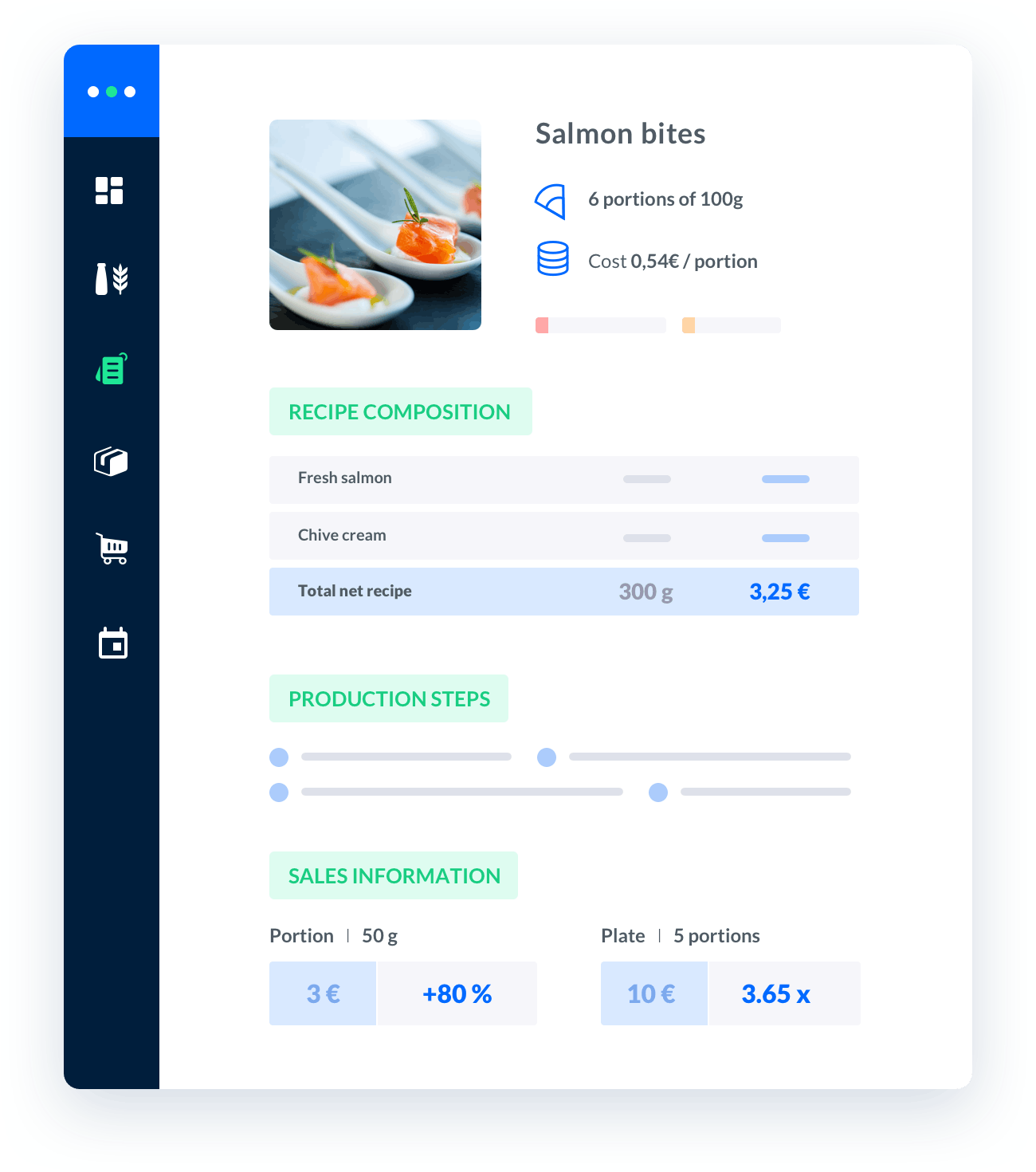restaurant operating costs breakdown
Operating costs are a critical aspect of running a restaurant successfully.As a professional in the catering industry, understanding the breakdown of these costs is essential for effective financial management.

Melba: the food cost app to optimize the profitability of your restaurant
Discover how to optimize the profitability of your restaurant with melba

The ultimate guide to food cost restaurant
Learn more about the food cost basis and how to reduce your food cost percentage
Operating costs are a critical aspect of running a restaurant successfully. As a professional in the catering industry, understanding the breakdown of these costs is essential for effective financial management. In this comprehensive guide, we will delve into the various components that contribute to restaurant operating costs. From labor expenses to rent and utilities, we will explore each aspect in detail, providing you with valuable insights to optimize your operations.
1. Labor Costs
One of the most significant expenses for any restaurant is labor costs. These costs include wages, salaries, employee benefits, and payroll taxes. It is crucial to manage labor costs effectively to ensure profitability and maintain high-quality service. Here are three key areas to consider:
1.1 Employee Wages
Employee wages constitute a substantial portion of labor costs. Depending on the type of restaurant and geographical location, wages may vary. It is essential to comply with local labor laws and pay employees competitively to attract and retain talented staff.
1.2 Employee Benefits
In addition to wages, employee benefits such as health insurance, retirement plans, and paid time off contribute to labor costs. Offering competitive benefits can help attract skilled individuals and foster employee loyalty.
1.3 Payroll Taxes
Payroll taxes, including social security, Medicare, and unemployment taxes, are additional expenses that restaurants must consider. These taxes are calculated based on employees' wages and can significantly impact overall labor costs.
2. Food and Beverage Costs
Food and beverage costs are another crucial component of restaurant operating costs. Managing these costs efficiently is vital to maintain profitability while delivering high-quality menu offerings. Here are three factors to consider:
2.1 Ingredient Costs
The cost of ingredients directly affects food and beverage costs. Prices can vary depending on factors like seasonality, availability, and sourcing. Careful menu planning, supplier negotiation, and monitoring ingredient prices can help control these costs.
2.2 Food Waste
Food waste can significantly impact operating costs in a restaurant. Implementing effective inventory management systems, portion control measures, and staff training can help minimize waste and optimize food and beverage costs.
2.3 Beverage Costs
In addition to food costs, beverage costs play a vital role in the overall profitability of a restaurant. Managing the cost of alcoholic and non-alcoholic beverages, including sourcing, pricing, and inventory control, is essential to maximize revenue and minimize expenses.
3. Rent and Utilities
Rent and utilities are fixed expenses that every restaurant must consider. Managing these costs efficiently can contribute to overall financial stability. Let's explore the key aspects:
3.1 Rent
Leasing a suitable space for your restaurant comes with a price tag. The rental cost depends on factors such as location, size, and market demand. Negotiating favorable lease terms and periodically reviewing rental agreements can help control this expense.
3.2 Utilities
Utilities, including electricity, gas, water, and waste management, are ongoing expenses for a restaurant. Implementing energy-efficient practices, such as using LED lighting and optimizing equipment usage, can help reduce utility costs and minimize environmental impact.
3.3 Maintenance and Repairs
Maintenance and repair costs are essential considerations for any restaurant owner. Regular maintenance, equipment servicing, and repairs can help prevent unexpected breakdowns and costly emergency repairs. Allocating a portion of the budget for these expenses is advisable.
4. Marketing and Advertising
Marketing and advertising expenses are crucial for attracting customers and building brand awareness. Here are three key areas to consider:
4.1 Digital Marketing
Digital marketing strategies, including website development, search engine optimization (SEO), social media marketing, and online advertising, are essential for reaching a broader audience and driving customer engagement. Allocating a budget for digital marketing initiatives is crucial in today's digital age.
4.2 Traditional Advertising
While digital marketing dominates the advertising landscape, traditional advertising methods such as print media, radio, and television advertising still hold value. Depending on your target audience and marketing objectives, allocating a portion of the budget for traditional advertising may be beneficial.
4.3 Promotional Activities
Organizing promotional activities such as happy hours, special events, and collaborations with local businesses can help attract new customers and encourage repeat visits. Budgeting for these promotional initiatives can contribute to increased revenue and brand visibility.
In conclusion, understanding the breakdown of restaurant operating costs is essential for effective financial management. By closely monitoring and optimizing labor costs, food and beverage expenses, rent and utilities, and marketing and advertising investments, restaurant owners can strive for profitability and long-term success. Remember, analyzing your specific business needs and adapting strategies accordingly is crucial for maximizing cost-efficiency and maintaining a competitive edge in the catering industry.






